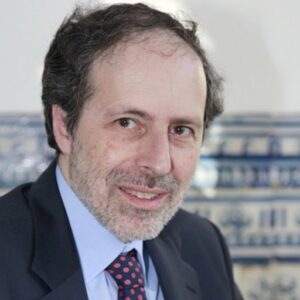
Title: General stochastic differential equation models for population growth and harvesting in random environments: Sustainability, optimization and impact of Allee effects
Joint work with: Clara Carlos and Nuno M. Brites
Abstract: We consider autonomous stochastic differential equation models, one without Allee effects and another with Allee effects, for the growth of a harvested population living in a randomly varying environment, even an environment with density-dependent noise intensities. These models are very general, satisfying only mild regularity assumptions and qualitative biologically driven assumptions, so that the conditions we obtain for population extinction and for the existence of a stochastic equilibrium are robust with respect to model choice. We use Itô calculus but will mention our results on its equivalence to Stratonovich calculus if one takes into account the different physical meaning of the average rates used.
For both calculi and for both cases of absence and presence of Allee effects, we show that, if the per capita net growth rate (difference between the geometric average natural growth rate and the harvesting mortality rate) is positive when population size is very small, there is a stochastic equilibriumwith a stationary density. If, however, that rate is negative (overharvesting), the population becomes extinct. The results for Allee effects models are new and extend previous results of members of this team for non-harvested population models and for constant effort particular harvesting models.
We then look at the case of constant harvesting effort and constant noise intensity for specific comparable models, namely the logistic (without Allee effects) and the logistic-like Allee effects models, including expressions for stationary densities and expected sustainable profits and yields. We assess the impact of Allee effects by comparing the two models and their optimal profits and yields for the Pacific halibut data.
Bio: Professor Carlos A. Braumann is Emeritus Professor at the Department of Mathematics of the University of Évora (Portugal), elected member of the International Statistical Institute, Honorary Member and 2019 Career Award holder of the Portuguese Statistical Society (SPE) and former President of ESMTB (European Society for Mathematical and Theoretical Biology) and of SPE. He is working on stochastic differential equation models applied to biological phenomena occurring in randomly varying environments, area in which he recently authored a Wiley book.
Acknowledgements: C. A. Braumann (Departamento de Matemática, Escola de Ciências e Tecnologia, Universidade de Évora) and C. Carlos (Escola Superior de Tecnologia do Barreiro, Instituto Politécnico de Setúbal) are members of the Centro de Investigação em Matemática e Aplicações, Instituto de Investigação e Formação Avançada, Universidade de Évora, supported by the Fundação para a Ciência e a Tecnologia (FCT), Project UID/04674/2020, https://doi.org/10.54499/UIDB/04674/2020. N.M. Brites (ISEG/UL – Universidade de Lisboa, Department of Mathematics & REM – Research in Economics and Mathematics, CEMAPRE) was partially funded by FCT, Project CEMAPRE/REM – UIDB/05069/2020, through national funds.